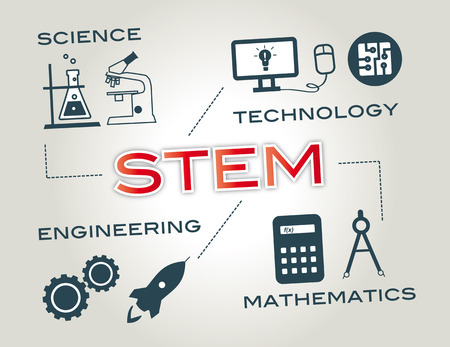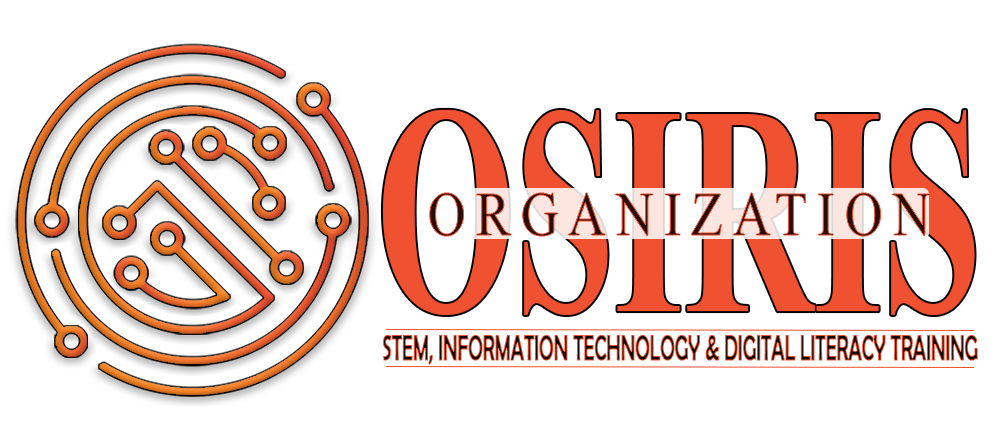Robust STEM Education
Osiris Organization strongly believes that staying in alignment and connected with one of the most talked about topics in education – STEM Education – will allow us to provide intentionally designed and linked learning experiences for students to develop and apply understandings of science, technology, engineering, and mathematics concepts and processes that helps students succeed in college and in their future careers. Osiris Organization will be expanding its training curriculum to offer an introduction to STEM disciplines with opportunities to progress to more in-depth training and understanding of STEM, its uses and how to create a pathway of employment or more advanced educational opportunities in a STEM related field. Contact us HERE to stay informed of our STEM training opportunities
STEM Skills – Science, Technology, Engineering, and Math
STEM education provides intentionally designed and linked learning experiences for students to develop and apply understandings of science, technology, engineering, and mathematics concepts and processes. Integrated STEM education exemplifies standards-based, best practice instruction from each field to explore relevant questions and problems based in the natural and designed world.
Growing up in the 21st century requires the STEM skills needed to succeed in the future. We should not only prepare our students but arm them with the essential skills that will help them flourish in their careers and life.
Over the last several years, there has been an emerging paradigm in the focus on STEM education because there is a rapidly increasing demand for these skills. But, enhancing STEM skills may require more than just great instructor involvement.

What Are STEM Skills and Why Are They Important?
STEM skills are critical thinking, statistics, engineering-design thinking, problem-solving, creativity, argumentation, intellectual curiosity, data-driven decision-making, flexibility, and collaboration. STEM skills can be improved by introducing concepts early and having students explore STEM careers firsthand.
Critical Thinking
Being successful in STEM not only depends on the ability to think critically but also to apply concepts to solve a problem. To find solutions to problems, students must use their critical thinking skills. In STEM, this is much more than solving word problems.
Learning STEM effectively requires analysis of information, design evaluation, reflective thinking, development of ideas, and proposing creative solutions. Becoming an independent, critical thinker requires these vital skills.
Project-based learning to challenge students to solve real-world problems, holding classroom debates, and giving students time to think about their experiences are great ways to develop their critical thinking skills.
Statistics
One of the most important disciplines for students to study is statistics. This course can be applied to all STEM fields. Truly understanding statistics is understanding probability and error rates. These concepts are applied to almost any type of problem that needs solving in STEM.
Engineering-Design Thinking
In STEM, using engineering-design thinking is crucial to problem-solving. This kind of thinking consists of identifying the problem, researching solutions, building prototypes, testing, redesigning, testing again, and further iterations as needed. Each step brings you closer to the solution.
Problem-Solving
The notion of modern skills is what binds the STEM movement together. A skill that every student needs is the ability to problem-solve. Everybody will face problems every day, but some may be more complex than others, like doing taxes.
Employers and society need problem solvers because its one of the types of skills that matter. Most STEM professionals may not directly use advanced mathematics like calculus taught in school, but the way it teaches people how to problem solve is significant.
STEM problems require productive work to come up with real and appropriate solutions. They also require fast work to analyze problems as they are presented.
To improve problem-solving, students will need lots of opportunities to practice. Try giving them real-world problems to solve. They will get better with more practice.
Creativity
In the future, being innovative is what will set students apart from others. More opportunities to be creative will allow students to become more comfortable with sharing their ideas.
Because of the nature of STEM, students should be prepared for jobs that don’t even exist yet. Building a strong foundation of universal STEM skills (like creativity and problem solving) will help students succeed in the workforce.
In STEM, failed attempts are positive experiences that offer more profound learning opportunities.
Creativity can be complicated and simple at the same time. We dont always have to teach outside of the box. Sometimes, the problem has to be looked at from a different perspective. Teachers can ask open-ended questions to develop this.
In science and math, teachers can show students different models so they get a range of ideas of how bringing together one idea might look. Or, teachers don’t have to show a model at all and instead, leave it open-ended so students come up with a solution on their own. You can ask students why they think it is, so they reflect and explain what they did to solve a problem. This supports creativity and teaches collaboration.
One of the many ways that we can make sure students are being innovative and using their creativity is by teaching them to think outside of the box. To nurture their creativity, teachers should give their students many opportunities to be innovative. They should allow students to run with their ideas if they have them. Teachers should ask open-ended questions and let students use their own ideas to come up with their own solutions.
Argumentation
The act of arguing is supporting a claim using evidence. In STEM fields, this means using critical thinking and analytical skills to find patterns in data, attempting to determine what the patterns mean, then using the data to back a claim. This skill is used in all disciplines. For example, in elementary school science, children are given a variety of noisemakers, such as whoopee cushions and tuning forks, to experience collecting data. Then, they are able to use that data to be able to argue that vibrations cause sounds.
Intellectual Curiosity
The days of having the same role in an organization forever are over. These days, people will have a role for two years then move on to a different role.
Aside from mastering content, workers need to be innovators, learn from failures, and keep moving on. They need to look across disciplines and ask questions that build connections. People must be lifelong learners and have intellectual curiosity drive them to figure things out.
To effectively solve problems, STEM requires active, hands-on participation. Students drive solutions and should ask questions, propose ideas, develop and test solutions, and make decisions after analyzing the data to understand how to polish ideas further.
Data-Driven Decision-Making
The ability to interpret data is the ability to make a decision based on scientific data. Choosing a career in STEM or not, students should know how to use data to make informed decisions in their lives.
Students develop this skill by collecting, analyzing, and interpreting data on an assortment of different things like reading graphs, tables, and charts, then analyzing the data. Students should practice this skill frequently to make data interpretation easier for them in the future.
Flexibility
These days, everyone needs a broad set of skills to adapt to new situations and demands. The need to manipulate data well by using quantitative skills. They need the ability to communicate clearly.
People who were skilled in the manufacturing jobs they had now need a new set of skills late in their careers to be applicable in the job market. They need to know quality control, technology, and statistics. The understanding of systems and programming is necessary to make sure automated production technology is operating accurately.
Flexibility is the ability to adjust to new situations. Students will use this skill a lot in their lives.
To develop this skill, teachers can give their students real problems to solve in class. These problems should have students draw from different areas of skill and knowledge.
An easy way to foster this skill is to use an assortment of different test formats. For example, on a single test, have students switch between multiple-choice, essay, and true or false questions. Students that can do this efficiently are considered to have excellent flexibility skills.
A fun way that students can develop flexibility is by playing educational apps on an iPad or a tablet. A lot of these apps cause users to play differently at each different level. Aside from learning to be flexible, students will also use their critical thinking skills to solve problems to get to the next levels.
Collaboration
Significant challenges aren’t usually solved by individuals working alone. Learning to work productively in a collaborative team is part of working on STEM problems.
